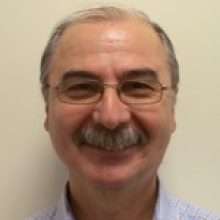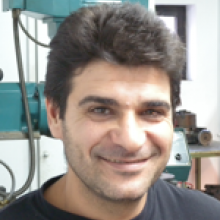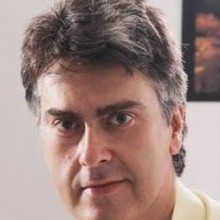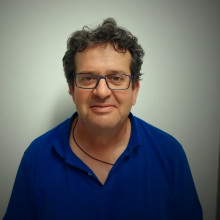
GDPR right to non publish is invoked by this person.
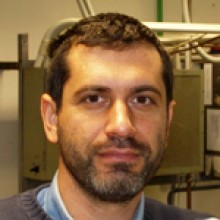
A major task of my endeavour relates to operating the Insitutional cryogenic facilities involving the helium and nitrogen liquefiers, as well as providing technical support in the research labs.
Education
- 2010, M.Sc. Environmental Science and Engineering, University of Crete, Greece
- 2005, B.Eng. Mechanical Engineering; Technological Educational Institute of Crete, Greece
Interests
- Design, construction and development of new devices depending on experimental requirements
- Automation of research laboratory operational capabilities
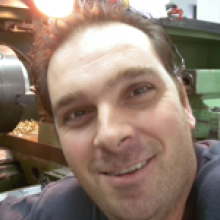
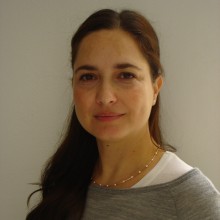
Kristalia (Alina) Melessanaki holds an arts conservation degree from the School of Conservation of Antiquities and Works of Art, University of Western Attica, Athens (1999) and has been a staff member at IESL-FORTH, since 1998. She has been actively involved in all research activities of the PhoHS group with emphasis on applications related to the use of laser methodologies for cleaning and analysis of heritage objects. Her research interests include laser spectroscopic techniques (LIF and LIBS) for the analysis and characterization of archaeological objects and works of art, laser cleaning applications (icons, paintings, contemporary artworks etc.) as well as evaluation and monitoring of the cleaning interventions using spectroscopic and imaging techniques.
Over the years she has participated in major national and EU projects at IESL-FORTH including IPERION-HS, E-RIHS, HELLAS-CH, POLITIEA-I and II, HERACLES, IPERION-CH, CHARISMA, ATHENA, PROMET, LASTOR, MOBILART.
Education
- 2001, B Sc, Department of Conservation of Antiquities and Works of Art, Athens University Applied Sceince, Greece
Career
- 1999, Training Scholarship, Diagnostics of artworks and archaeological materials (LIBS analysis) & Laser cleaning of paintings, stones, ceramics, glass, ivory using several types of lasers, IESL - FORTH, Greece
- 1998, Conservation training at Monastery of Saint Katherine in Mount Sinai - Cairo, Egypt
Interests
- Investigating laser-based techniques for cleaning heritage objects
- Evaluation and monitoring of cleaning interventions using spectroscopic and imaging techniques
- Use of laser spectroscopic techniques (LIBS, LIF) for analysis on works of art and archaeological objects
- Non-linear imaging microscopy techniques as diagnostic tools for Cultural Heritage studies
- Laser assisted removal of polymeric over-layers from paintings
Other
PATENT
Restoration of vitreous surfaces using laser technology, application submitted to Patent Cooperation Treaty (PCT) on 15 March 2016 and then to European Patent Office (EPO) on 15 October 2018.

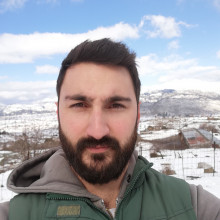
A.Lemonis is an Electrical and Electronics Engineer, graduated from Sheffield Hallam University.He is working in the Foundation for research and technology since 2013 developing software and hardware components for various experiments.
Education
- 2009/2013 Bachelor of Engineering in Electrical and Electronic Engineering from Sheffield Hallam University
Career
- 2017-Today, Founder of SciLabs
- 2015-Today, ULTRAFAST LASER MICRO- AND NANO- PROCESSING GROUP
- 2013-2015, ULTRASHORT NON-LINEAR INTERACTIONS AND SOURCES GROUP
Interests
- Embedded Electronics
- Analogue/Digital Circuit Design
- Automations for Laser Experiments
- IoTs
- 3D Printing
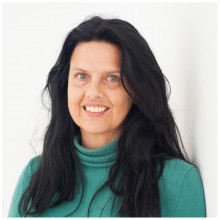
Education
- 1998, Physics Lab Technician, IHK Leipzig & Physics Department, University of Leipzig, Germany
Career
- 1998 - Technical Scientist, Specialized in light scattering (SLS, DLS, DDLS), IESL-FORTH Heraklion, Greece
Physicist, MSc.
2003 -
Technical Scientist at IESL-FORTH, Laser Group. Main areas of activity: Tunable and solid state nanosecond lasers, high/ultrahigh vacuum technology, cryogenics, laboratory safety and waste management, 2D/3D CAD design/modeling of parts/apparatus/setups.
Education
- 09/1998 - 12/2000 MSc, Applied Molecular Spectroscopy, Dept of Chemistry, Univ. of Crete
- 09/1992 - 09/1998 BSc, Physics, Univ. of Crete (specialized in lasers/optoelectronics)
Interests
- Laser Science
- Vacuum Technology
- 3D CAD Design/Modeling
- Chemistry
Other
Research Experience
IESL-FORTH
